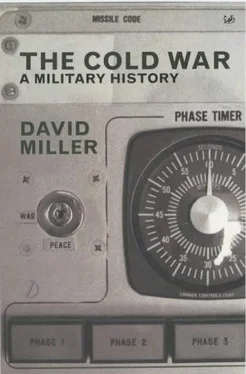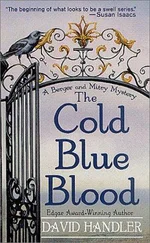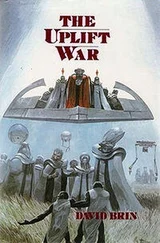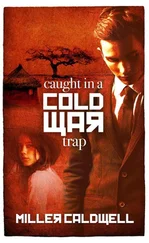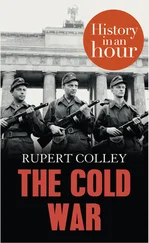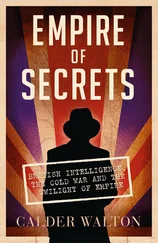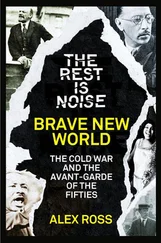Meanwhile, on 8 November a formal meeting took place between the Western Union Commanders-in-Chief Committee and the Commander-in-Chief, US Forces Germany. This was held at Melle, France, and considered the military aspects of a possible Atlantic treaty.
More important even than all of these, however, was the US presidential election in November, which, rather naturally, had diverted the attention of many members of the US government, not least of Truman himself. Truman was widely predicted to have little chance of success, but one of the fruits of his unexpected victory was that most of the principal US actors in this drama remained in place, the major exception being George Marshall, who took the opportunity to retire and was replaced by Dean Acheson.
Various schemes for a new alliance were considered. The first was simply to extend the Brussels Treaty to include the USA and, perhaps, Italy. Another scheme was to have an Atlantic pact running in parallel to the Brussels Treaty; this would include only countries with Atlantic coastlines – i.e. Canada, France, the UK, the USA and, of course, Norway. Some consideration was also given to yet a third body, a Mediterranean pact, primarily as a means of including Italy.
An Ambassadors Committee comprising representatives of Belgium, Luxembourg, Canada, France, the Netherlands and the UK, chaired by the US secretary of state, also considered a number of geographical factors. In a move which has subsequently been misinterpreted, the Tropic of Cancer was adopted as the southern boundary of the treaty. This was simply meant to be a device to preclude any African, Caribbean or Latin American country from joining and not, as was subsequently believed, to place an absolute barrier on any collective planning, manoeuvres or operations south of the Tropic of Cancer in the Atlantic Ocean.
As in all negotiations, problems were encountered from time to time, but what came to be known as ‘the NATO spirit’ produced a feeling of mutual desire to reach a satisfactory conclusion, with the ambassadors managing to take their respective foreign ministers along with them, while the US State Department kept the Senate Foreign Relations Committee involved.
At the start of the Washington discussions it was clear that membership of the proposed alliance would include the Brussels Treaty powers (the Benelux countries, France and the UK), Canada and the United States, but there was some discussion over other potential members.
It was considered highly desirable that Denmark and Norway should join the proposed alliance, and, if possible, Sweden as well. These were long-established democracies and were as much threatened as any other country in Europe; indeed, in 1948–9 Norway was probably the most threatened of them all. Further, they occupied very important strategic positions. Denmark sat astride the western end of the Baltic, dominating (with Sweden) the Skaggerak and the Belts; it also owned the island of Bornholm in the middle of the Baltic. Of greater importance to the United States, however, was Danish ownership of Greenland, which was a vital stepping-stone in the air route from the United States to Europe at a time when transport aircraft had a comparatively short range. Norway was also strategically important, since it lay along the southern flank of the Soviet Union’s naval routes to the Atlantic and shared (with the USSR) the island of Spitsbergen. Sweden, however, was adamant that it would not abrogate its neutrality, and its membership was not pursued.
Once talk of an Atlantic pact started, Canada, the UK and the USA all expressed a desire that Iceland should be a founder member, as did Norway when it joined the discussions. Iceland was a small, unarmed nation which found itself occupying a key strategic position in the North Atlantic. It had become independent from Denmark in 1918 and had made an immediate declaration of perpetual neutrality, although Denmark had retained responsibility for its foreign affairs until April 1940. During the Second World War Iceland had been occupied by British troops, who arrived on 10 May 1940, but in July 1941 these had been replaced by US troops, the last of whom departed in April 1947. The US had, however, negotiated the right for its aircraft to transit through Keflavik for as long as US occupation forces remained in Germany.
Iceland had been seeking its own partners, but appreciated early on that it could obtain no realistic guarantee of protection from the proposed Nordic pact. An Icelandic mission visited the USA on 14–17 March and was given an assurance that Iceland would have a special position in the alliance, that it would not be required to produce any armed forces, and that no foreign troops would be stationed in Iceland in peacetime. A very lively domestic debate eventually resulted in agreement to join.
Italy was a more difficult problem. It had emerged from the war in a weak position, having first fought as a partner with Germany and Japan in the Axis pact, before signing an armistice in 1943 and then joining the Allies as a ‘Co-Belligerent’. For some years after the war Italy was not a member of the United Nations, and when discussions about a potential Atlantic treaty began there was considerable debate on whether Italy should be included or not. Internally, there was no clear support among the Italian people for such an alliance, and the Left – in particular the very strong Communist Party – wanted to declare the country neutral. Externally, there was some reluctance among other potential members who had been at war with Italy until only a few years earlier, while the United States seemed to waver: on one hand it did not want to upset other potential members, but, on the other, it did not want to upset the large Italian community in the USA. Some even argued that the northern orientation of the proposed treaty – its title had already been tentatively agreed as the ‘North Atlantic Treaty’ – appeared, by definition, to exclude the ‘southern-tier’ nations.
The United States encouraged Italy to seek to join the Western Union, but the visit of the Italian Chief of General Staff, General Marras, to the USA in December 1948 appears to have hardened the US official position in its favour. Thus, when the Ambassadors Committee, now including a representative of Norway, met in Washington on 4 March 1949 Acheson’s opening speech included the statement that the United States favoured Italian membership. Ernest Bevin had included Italy in his original proposals for a Europe-wide defence treaty, but thereafter he expressed some reservations; faced with this firm proposal by the United States, however, these reservations were withdrawn and Italy was invited to join the talks on 8 March and accepted on 11 March.
Unlike other potential members, Portugal was a dictatorship, and was not invited to join the Washington talks until early 1949. Portugal stipulated that accession to the treaty would not mean that it would accept foreign troops stationed on its territory (Norway had stipulated likewise), although US bases were permitted in the strategically important Azores.
France, as usual during this period, was beset by domestic political problems. In early 1947 the government was formed from a coalition of centrist parties, and on 4 May the prime minister, the Socialist Paul Ramadier, dismissed Maurice Thorez and three other Communists from government. Despite these upheavals, France joined the United Kingdom in the Dunkirk Treaty and shared the lead with the United Kingdom in finalizing the Brussels Treaty. In 1949 the new prime minister, Henri Queuille, said that the United States must not allow France and western Europe to be invaded by the Soviet Union as they had been by Germany, and also added that the defence of western Europe must start on the Elbe (i.e. the border between the Soviet and Anglo-US zones of occupation). Not surprisingly, the French Communists were greatly opposed to the North Atlantic Treaty, but it went to the National Assembly on 17 May and was approved on 27 July.
Читать дальше
